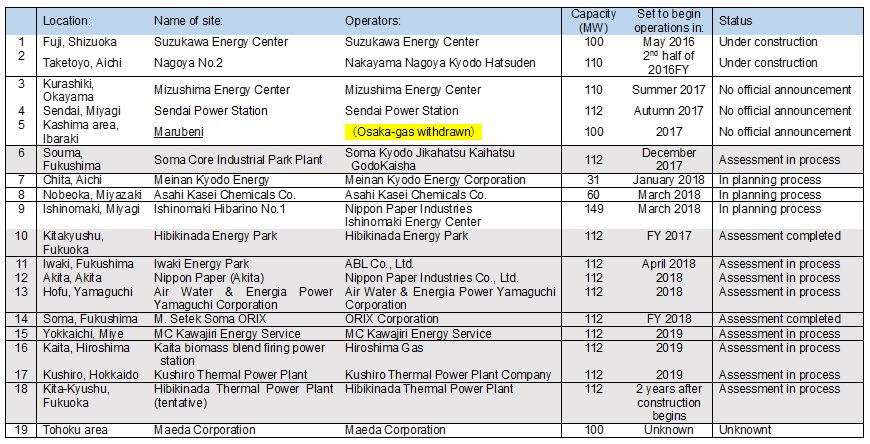At the end of 2015, the Ministry of Environment released their summary report on the environmental issues surrounding future small-scale thermal plants. The problems with small-scale thermal plants, among other things, stem from the energy shortage due to Fukushima and reform of the country’s power system. Under these circumstances, the number of small-scaled thermal plants that are slightly below the EIA’s (environmental impact assessment) target of 112.5 MW is sharply rising.
There are more than 19 new coal plant plans below 112 MW listed on the site’s “New Coal-fired power plant Watch List”. These plans were basically approved due to a loophole in the EIA process. The environmental impacts of these plants on a global scale, let alone on the local level, are immeasurable. Among these 19 plant plans, we have confirmed that only 10 sites have a local EIA. According to the Ministry of Environment, the plans without EIA process are all in 2 prefectures. Compared to large-scale projects, it may be thought that the problems of small-scale projects are smaller. However, small-scale thermal plants are considered 10% less efficient than large-scale ones. Even though these plants are small, if the number of small-scale plants continues to rise, they will have the same (or larger) impacts as large-scale plants in terms of CO2 emissions. In fact, the installed capacity of the 19 planned small-scale plants will amount to approximately 2000MW – this equates to the installed capacity of 2 nuclear power plants.
Pushed by the electric power liberalization movement (which began in April 2016), various companies have been responsible for planning these small-scale thermal plants and now have an eye on the current situation. These companies (trading, gas, chemical, paper manufacturing, iron and steel) had never been power suppliers but now have their hand in the power industry. In related news, Kansai Electric Power has drawn up a construction plan in Sendai (in Tohoku-Electric Power’s jurisdiction) and Chubu Electric Power in TEPCO’s jurisdiction, both in coordination with other companies. Through the development of cheap electricity, those companies have a clear strategic intent to use the electricity liberalization move as a stepping-stone towards the expansion of their businesses.
The Ministry of Environment’s summary report leaves 3 issues that need to be considered: (1) review of the target scale of EIAs, (2) continuation of the enhancement/follow-up of guidelines (for a recommended voluntary EIA) and (3) the creation of an energy conversion sector for reducing greenhouse gas emissions. However, as written in the Ministry of Environment’s summary report, there will be long-term environmental impacts of the thermal power plants when they are put in operation. More drastic regulations need to be put into consideration now that it’s become imperative that these plants be stopped in their tracks while they are in their planning stages.
Following COP21, Osaka Gas made an announcement that they were planning to construct a new coal-fired power plant (100MW) in Ibaraki prefecture in cooperation with Marubeni Corporation, but they decided to withdraw from this project. In addition to a review of stricter regulations by the government, shouldn’t operators make the decision to withdraw on their own?


